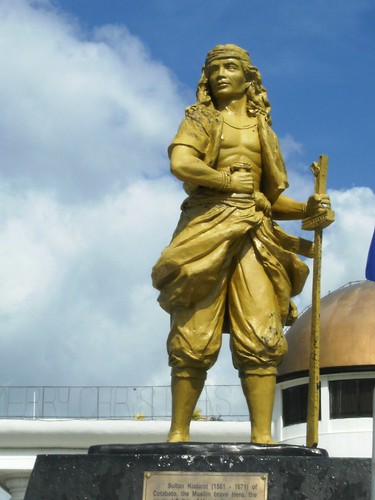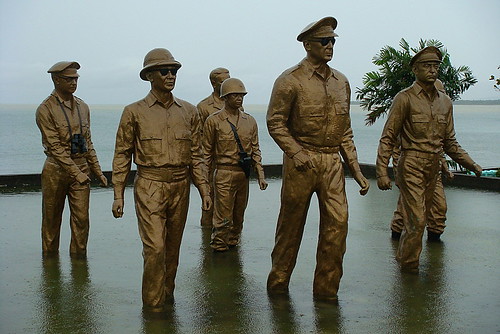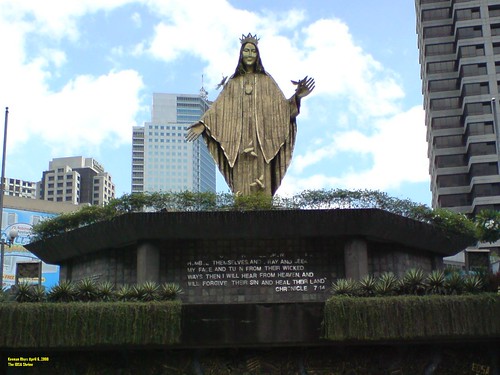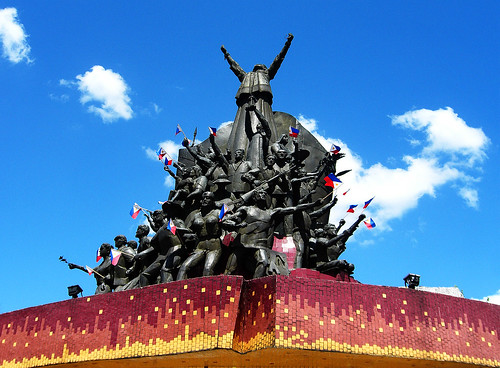The Philippines is culturally and historically rich country. Here are some historic shrines and monuments from across the archipelago which serves as reminders of the rich culture and history of the country.
The Philippines is culturally and historically rich country. Here are some historic shrines and monuments from across the archipelago which serves as reminders of the rich culture and history of the country.
Rizal Park
Rizal Park is situated in the heart of the city of Manila, the capital of the Philippines, overlooking Manila Bay. Luneta has been the site of some of the most significant moments in Philippine history. Among them is the execution of Dr. Jose Rizal on December 30, 1896, whose martyred death made him a hero of the Philippine Revolution. It was officially renamed Rizal Park in tribute to him; the Declaration of Philippine Independence from American rule on June 4, 1946; and the political rallies of Ferdinand Marcos and Corazon Aquino in 1986. The monument also serves as the point of origin or Kilometer Zero to all other cities in the Philippines.
Lapu-Lapu Shrine

This bronze statue of Lapu-Lapu is located in Mactan Shrine. Lapu-Lapu was the native chieftain of Mactan Island who resisted the efforts of Magellan to subdue his people and be converted to Christianity and to be subjected to the throne of Spain. The subsequent battle on April 27, 1521 between the Spaniards and Lapu-Lapu and his men resulted to the death of Magellan. The shrine was erected on the supposed spot where the battle took place.
Magellan Shrine

The Magellan shrine is a large memorial tower erected in honor of the Portuguese explorer Ferdinand Magellan. The spot is believed to be the area where Magellan was killed in the Battle of Mactan on 1521, Philippines. The monument measures 30 meters high and it is located in the place of Punta Engaño, Mactan Island, Cebu.
Blood Compact Site

The famous Blood Compact Site is located in Bohol’s capital city, Tagbilaran. The historic site is the place where one of the most important events in the Philippines’ history, the Blood Compact between Sikatuna, a native chieftain and Miguel Lopez de Legaspi, the Spanish explorer and colonizer took place on March 16, 1565. The Sikatuna-Legaspi blood compact is considered as the First Treaty of Friendship between peoples of different races, religious, culture and civilization. It was a treaty of friendship based on mutual respect and equality.
Sultan Kudarat Monument

This statue is a reminder that the Spaniards never succeeded in conquering the whole of Mindanao after sending 11 expeditions to conquer the island. This is the monument of Sultan Muhammad Dipatuan Kudarat (1580, in Lanao del Sur-?) the seventh Sultan of Maguindanao. He prevented the Spaniards from conquering his sultanate in Mindanao. He was a direct descendant of Sharif Kabungsuan, a Muslim missionary in the 14th century.
Bonifacio Monument

The most famous landmark of Caloocan City is the Monumento Circle which houses the Bonifacio Monument, a famous monument to Andres Bonifacio. The name Monumento itself is derived from the Spanish word for monument. Bonifacio is the founder of KKK, a revolutionary organization who started the revolution for Philippine independence from Spanish colonization of the archipelago for more than 300 years.
Pinaglabanan Shrine

Pinaglabanan Shrine is located on N.Domingo cor. Pinaglabanan Street in the city of San Juan, Metro Manila, Philippines. The shrine has a statue of a woman supported by two children, holding up a bolo, or a machete. This commemorates the first attack of the Filipinos against the Spanish on a warehouse in the area in 1896. The statue can also be seen on the town seal.
McArthur Landing Site

The McArthur Landing Site in Palo, Leyte was created to commemorate McArthur’s famous parting words “I Shall Return” that he made good of his promise before he left the country after its downfall to the Japanese Imperial Army during World War II. This famous event took place on October 20, 1944. The Allied landing on Leyte Island’s shores was a pivotal moment in the history of the War in the Pacific and in the human struggle for liberty. The Leyte landing is a central event in the long history of friendship between the peoples of the Philippines and the United States.
Shrine of Valor (Dambana ng Kagitingan)

Bataan Peninsula was the scene of harsh fighting between American-Filipino forces and the invading Japanese forces. On April 9, 1942, the Bataan defenders surrendered to the Japanese. About 70,000 U.S. and Filipino soldiers were captured. The Shrine of Valor (Dambana ng Kagitingan) atop Mt. Samat in Pilar was built in 1966 in memory of those soldiers of World War II. It consists of the “Colonnade”, a marble capped structure with an altar, esplanade and a museum. Inside the museum you can learn more about the battle of Bataan and the infamous “Death March” that followed. The captured US & Filipino soldiers were forced to march more than a hundred kilometers from Bataan to Tarlac. The great cross is a symbol of sacrifice of those who sacrificed their lives during World War II. You can get to the top through a lift in 30 seconds and have a fantastic view of Manila Bay and the Corregidor Island.
EDSA Shrine

The Shrine of Mary, Queen of Peace, Our Lady of EDSA, or more popularly, the EDSA Shrine is a small church located at the intersection of Ortigas Avenue and EDSA in Quezon City. The shrine, built in 1989 originally to commemorate the memories of the People Power Revolution and its peaceful outcome, stands on the site of two peaceful demonstrations that ousted Philippine presidents Ferdinand Marcos (the People Power Revolution or EDSA I) and Joseph Estrada (the EDSA II). It is officially called the “Shrine of Mary, Queen of Peace” or “Our Lady of Peace Quasi-Parish”, although these names are seldom used.
People Power Monument

The People Power Monument, located at the corner of Epifanio Delos Santos Avenue (EDSA) and Katipunan Avenue in Quezon City, is a sculpture commemorating the EDSA revolution.

No comments:
Post a Comment
Lubos na tinatanggap ang iyong nasa isip.